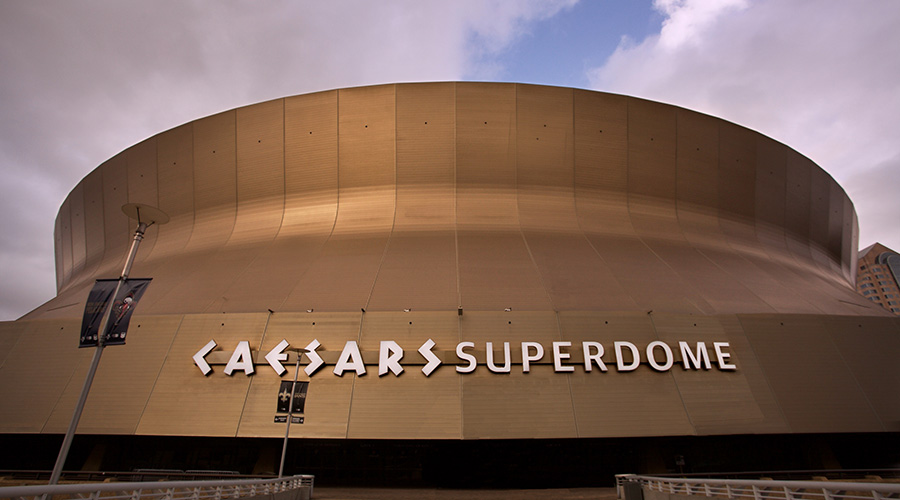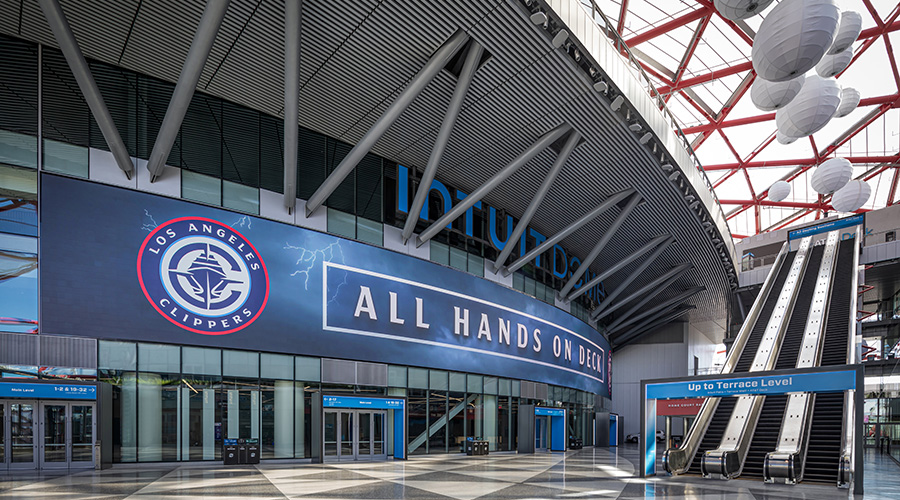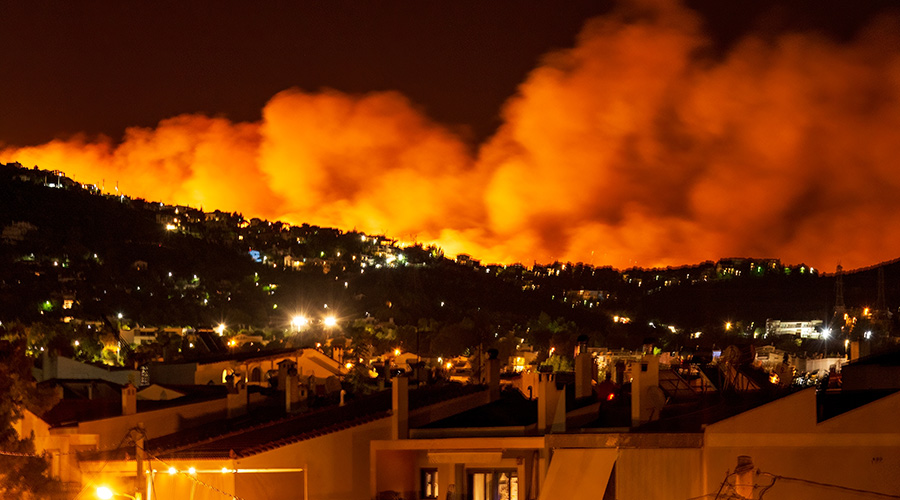
How the Caesars Superdome Rebuilt After Hurricane Katrina
After Hurricane Katrina struck the New Orleans Caesars Superdome, it was unclear if football would ever be played there again. Twenty years later the facility will host the Super Bowl. February 7, 2025
By Mackenna Moralez, Associate Editor
“Well, you might want to get a good look at the Saints today,” a father told his son during the 2005-2006 football season. “This will be the last time you’ll see them in Louisiana.”
The Caesars Superdome, home of the New Orleans Saints since 1975, was decimated by Hurricane Katrina in 2005. The following football season led to a series of losses for the team as they were forced to play at different venues while the Superdome was being assessed for damage. At the time, the future of the Superdome was unknown. Rumors were flying widely about the extent of the damage, and whether or not the Saints would stay in Louisiana. Officials at the facility were also unsure of what was to come.
Hurricane Katrina was unlike anything the country had ever seen before. The Category 5 storm struck New Orleans and its surrounding areas, causing 1,392 deaths and property damage worth $125 billion. During the hurricane, the Superdome was used as a public shelter for the third time in its history. Approximately 10,000 residents and150 national Guardsmen sheltered in the facility the first day it was opened to the public, eventually reaching upwards of 20,000 residents as search and rescue teams brought on more people from areas that were hit hard from flooding.
During the storm and the sheltering of residents, the Superdome was hit with significant damage. Nearly 80 percent of the roof was damaged, and water damage led to the spread of mold and destruction of electrical systems. Many believed the facility to be a total loss, but Doug Thornton, executive VP of stadiums and arenas at ASM Global - who was at the Superdome the length of the hurricane - held onto hope that they would be able to rebuild and bring the Saints back home.
“It was a horrible season for them [the Saints],” Thornton says. “Paul Tagliabue, Roger Goodell, Gene Upshaw and number of NFL leadership came to New Orleans for a two-day meeting. They wanted to see the damage. They’d been to Baton Rouge for a couple of these games, but they had not been to New Orleans. They wanted to see the 9th Ward. They wanted to see the training facility. They wanted to see the Superdome and they wanted to see the city. We had meetings with the business community and Tom Benson, the owner of the Saints, came in.”
During their time in New Orleans, Thornton drove a van to the Superdome where everyone was able to see the extent of the damage that occurred. At the time, the facility was completely stripped down and mold in the ceiling had yet to be remediated. The carpet was ripped out and all the wet materials, such as ceiling tiles and drywalls, were removed. To put it simply, the place was gutted.
“We did a tour, and I remember Roger Goodell and I were walking on the Plaza Level and he said, ‘You know what? I think we can put it back together. I think we can have the team come play here next year,’” Thornton says.
Even with the go-ahead from top NFL officials, there were many logistical factors at place that concerned Thornton. There was a lack of labor available in New Orleans as the city was still essentially shut down by the hurricane and supplies weren’t guaranteed either. The NFL offered $20 million to jump start the project, and Thornton promised that he would work with architects to see if there was a way that they could open for the 2006 football season.
“Like anything, when you start focusing on a challenge, you find answers,” Thornton says. “Our architects came up with this phrase called ‘Football Ready.’ We thought ‘what if we just do the minimum required to play football?’ We can get an occupancy permit and functioning systems. All suites may not be finished, and we might even be serving off of folding tables, but we can get f and a scoreboard and play football, and it won’t affect the game.”
That was the turning point for Thornton. Just nine months before the 2006 football season, he and his team committed to a $200 million renovation because they understood what it would mean to have the Saints come back to the Superdome. Within two weeks of Thornton’s conversation with the NFL commissioner, the Louisiana Governor Kathleen Blanco gave Superdome officials an emergency order that allowed them to take control of the construction process, cutting through all the bureaucratic red tape. Shortly after, the NFL officially announced that the Saints were returning to the Superdome.
“Those were the two things that gave us the momentum to get the project off the ground,” Thornton says. “We didn’t know how we were going to pull it off, but we were committed to it. We did not want to fail. We knew that if we couldn’t get this done, and that we couldn’t bring the team back, that it would cause a major shift of life in Louisiana. Failure wasn’t an option for us.”
Once breaking ground on the renovation, they only had one goal in mind: playing a football game in the Superdome in September of 2006. From that point moving forward, it was just a race to see how much workers could get done and anytime they encountered a challenge, they were quick to find a solution.
“None of us really slept, but every time we got into a situation where we had to figure something out, it was groups like the NFL or Governor Blanco that came together for the common good to help this thing get across the finish line,” Thornton says.
It was easy to think of the Superdome as a sick patient after the hurricane. Very few people thought it was able to be put back together and many were concerned about its future. But with the hope and trust of the NFL, the facility was able to be rehabilitated. For Thornton, this represents the resiliency that all of New Orleans felt at that time. After more than a year, the Superdome reopened to the New Orleans Saints on Sept. 25, 2006, winning against the Atlanta Falcons, 23-3.
“It [the Superdome] was the first major facility to be rebuilt after Katrina and was the most visible reminder of the tragedy that played out there,” Thornton says. “The rebuilding effort was something that inspired all of us who live here. When it was completed, it was basically our message to the world that New Orleans was going to recover. We could have had a very different outcome, and it would have literally altered the course of history. But to me, it serves as a symbol of resilience and recovery for the whole region.”
Twenty years after Hurricane Katrina, the Caesars Superdome will host Superbowl LIX on Feb. 9.
On Feb. 18, the Facilities in Focus podcast will release an exclusive interview with Doug Thornton on how the facility has been revived in the 20 years since Hurricane Katrina. You can subscribe to the Facilities in Focus podcast here.
Mackenna Moralez is the associate editor for the facilities market and the host of the Facilities in Focus podcast.
Next
Read next on FacilitiesNet












